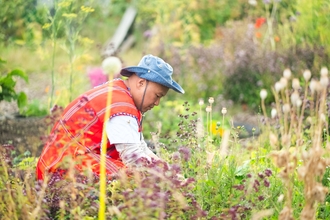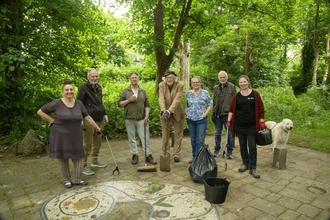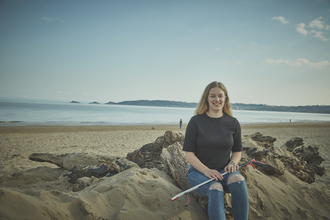Community in Hull makes their local park a better place to be
Working in partnership with the community, we listen to their voices and ideas and strive to turn ideas into reality, to create a place where everyone feels safe, families can grow, and memories are made.
We support events in the park, encourage local groups to collaborate with us, and plan to look after the environment and biodiversity of the park.
We want to increase biodiversity within our park and encourage other people to engage with the living environment of the park. This will help to raise people’s awareness of how important the natural ecosystem is and why we are striving to make positive changes within the landscape to contribute to an enhanced ecosystem. By encouraging local people to understand and look after the park’s ecosystem and its biodiversity we hope to attract more people to spend time in the park whilst caring for it.
So far, we’ve worked with Hull Butterfly City to plant over 80 Alder Buckthorn saplings as part of the Buckthorn Corridor for yellow brimstone butterflies. We have also planted various wildflowers, and wild garlic. We have built and planted up some raised beds to create a mini community allotment on site. Some of the beds have been given over to herbs and perennial wildflowers, some of which can serve as a good food source to bees, hover flies and other pollinators.
To help us identify different species of flora and fauna on the park we undertook training in the use of iNaturalist and Seek apps to empower people to identify and log species themselves. Following this training, we have carried out Bioblitz events where we brought our community together to record wildlife in the park. The first event in 2022 saw more than 120 species observed and recorded!
Building on this success, we worked with North and East Yorkshire Ecological Data Centre and Yorkshire Wildlife Trust to be part of Hull’s efforts in the City Nature Challenge 2023 - a major international initiative around observing and recording wildlife in their natural settings.
We endeavour to source all our packaging for events from environmentally focused organisations to ensure that plates, cutlery, cups, etc, are biodegradable, thus reducing our carbon footprint when holding events.
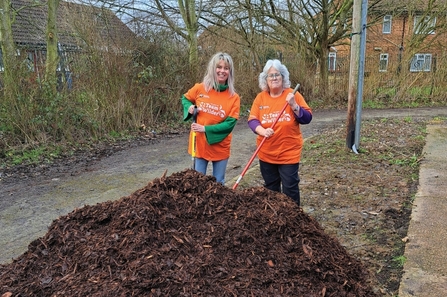
Photo copyright Andy Steele/Yorkshire Wildlife Trust
What resources or support have you used?
In the allotment area, the raised beds were built from upcycled decking material, which we rescued from going into landfill, and filled with compost that came from the Hull City Council’s recycling of household waste. In addition to staff from Yorkshire Wildlife Trust and Child Dynamix, staff from North and East Yorkshire Ecological Data Centre, The Deep, Rewilding Youth, and the University of Hull have helped support our site development plans and community engagement events, and this mutually beneficial partnership network is something that we are excited to build on through further collaborative events and projects in 2023 and beyond.
Did you empower or involve others?
During the BioBlitzes, many children and adults from the local area helped with the observations of wildlife and the logging of the wildlife data that is now informing our plans going forward. They were led in groups by local individuals who kindly volunteered their knowledge and expertise to put names to wildlife that the families and individuals noticed whilst on the park.
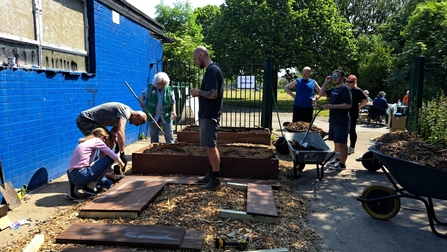
Photo copyright Rachel Hardy/Yorkshire Wildlife Trust
How did it make you feel?
Making nature accessible and relevant to our community is a real passion of the ‘friends’. Encouraging our local community to understand the role we all play in making the shift to more sustainable ways of living, both as a collective and as individuals, is key to all we do. We really feel like we are beginning to help the community embrace their social responsibility when thinking of the environment, especially on our beloved park space.
What changes have there been as a result of your actions?
It is early in our journey in terms of our actions for wildlife on the park; having now collected baseline data via the BioBlitzes, we are excited to gather more information through similar events each year, to help assess what impacts the changes we are making have for wildlife. Recently Hull City Council have engaged with us concerning some infrastructure work they would like to do as part of the government’s Levelling Up (LU) programme. We have worked closely with them, with advice and guidance from Yorkshire Wildlife Trust, to ensure that wherever possible this project brings benefit for nature as well as people, enhancing the park’s potential as an evolving ecosystem.
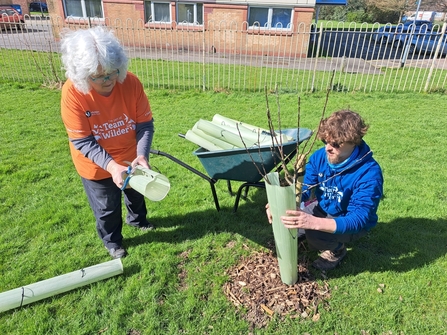
Photo copyright Rachel Hardy/The Yorkshire Wildlife Trust
What have been your favourite nature moments or encounters with wildlife whilst doing this?
There have been some lovely moments of nature connection as part of our activity at the park, from having dragonflies seemingly following us around the park during a walking meeting last summer, to watching in awe as a circling buzzard was mobbed by a pair of anxious crows defending their nest. One moment that especially stands out though, is when we had local experts leading nature ID walks during our community BioBlitz events and a young girl in one of the groups developed a fascination with finding different snails, wanting to know what species they were, constantly searching the undergrowth in hope of finding more species. We all found it fun to learn that snails have a kind of bellybutton (their ‘umbilicus’) but this girl in particular loved the fact that she discovered how to tell adult, brown-lipped snails from juveniles by looking at this feature, and from then on she became obsessed with finding more and more snails, comparing their pretty stripy patterns, and working out if they were ‘children’ or ‘grown-ups’!
Although we missed it ourselves, Phill Robinson, one of the fantastic experts supporting us during our BioBlitzes activity, reported coming across a kestrel which had just caught a prey item and was starting to consume it as he spotted it; there really is so much nature right on our doorsteps, even in these very urban spaces!
What do you plan to do next?
As a next step we are working with Yorkshire Wildlife Trust, Hull City Council and Susdrainable to look at the viability of creating a bog garden next to the community allotment area. We have visited Hull University for a tour of their ground-breaking SuDSlab sustainable drainage infrastructure, click here to find out about that.
Drawing inspiration from this, our plan now is to set up a system to capture rainwater from the roof of a sports changing room building and feed this into a natural nearby hollow, which we will further dig out and line with a clay liner. Our hope here is to create an area where moisture-loving plants can thrive, which could also serve as a breeding site for the dragonflies that we have observed around the perimeter of the park, and possibly attract frogs, newts and other amphibians.
Hear more from some of the many groups that are taking action for nature in Yorkshire, and find out about the exciting opportunity to become part of #TeamWilder here
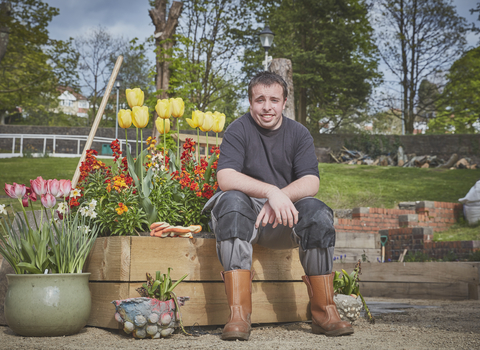
The Wildlife Trusts
Have you been part of a community nature project?
We'd love to hear from you! Your experiences will be shared right here on the Community Hub and will inspire others to take action in their own neighbourhoods.
Except where noted and excluding images, company and organisation logos, this work is shared under a Creative Commons Attribution 4.0 (CC BY 4.0) Licence.
Please attribute as: “Nextdoor Nature (2022-2024) by The Wildlife Trusts funded by The National Lottery Heritage Fund, licensed under CC BY 40”

